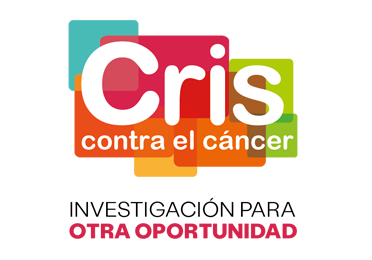The laboratory of gene expression and cancer at the VHIO, in collaboration with the medical oncology and brain surgery services of Vall d’Hebron hospital and the Vall d’Hebron Research Institute, has recently discovered a new molecular mechanism that regulates the proliferation and differentiation of the so-called glioma-initiating cells (GICs) in brain tumours. These cells could be responsible for the initiation and recurrence of tumours, and in some cases for the resistance to treatment.
The transforming growth factor-ß (TGF-ß) is responsible for the regulation of this mechanism via the induction of the renewal of GICs through a gene, LIF. This gene is directly involved in the proliferation process. The results of this study, led by the scientist Joan Seoane from ICREA of VHIO, are published in the journal Cancer Cell. They represent a step forward in the research of anti-glioma treatments.
Attack on initiating cells
Recently, an important likeness has been discovered between stem cells and a subpopulation of glioma-forming cells. These cells are responsible for a type of brain tumour that in its most serious state (high grade) gliobastoma multiforme is still virtually incurable. The resemblance of these two cell types is based on the fact that they are undifferentiated and, at the same time, show a lot of plasticity and a capacity to diversify towards different cell types. Whilst tumour stem cells are responsible for the development of the tumour, regular stem cells participate in the regeneration and repair of healthy tissues.
These tumour cells, so similar to the stem cells, are in fact GICs, so called because they could be responsible for the origin of a brain tumour (and possibly other tumours), as well as for their progression and recurrence. Secondary cells do not have this role. The classic oncological methods, chemotherapy and radiotherapy, act on these secondary cells and not on GICs, which are more resistant and which are the true originators of the tumour. As the treatment attacks the daughter cells, the tumour tends to reoccur.
New studies have been developed in order to identify the molecular mechanisms that regulate these stem cells or initiating cells. The information gathered will help develop new therapies which aim to attack the glioma stem cells directly.
From patients to mice
Seoane’s team studied tumour samples directly from patients from the Vall d’Hebron Hospital in order to understand the biology of these stem cells. Specifically their regulation and what determines (when they multiply) the generation of new cells or differentiated cells. An important occurrence as it determines the appearance of a tumour.
The stem cells of these tumours were isolated, grown in vitro and injected on immuno depressed mice, so that the same tumour developed on the mice’s brain. From these tumours they researched the role of TGF-ß, already known from previous studies for its implication in the metastasis. Seoane’s team discovered in 2007 the hyperactive role of TGF-ß in the glioma. Moreover this high activity is a factor in a poor prognosis (reducing the survival chances).
With this prior knowledge, the scientists asked themselves what the role of this factor was in the population of the cells responsible for the origin of the tumour, the GICs. They treated the cells that were isolated from the patients with TGF-ß, in order to find an answer to their question. The results showed that indeed the pathway increased the proliferation of stem cells that were not differentiated and that, also, they were more oncogenic.
The researchers wanted to go one step further trying to find out the mechanism of this way through the identification of the genes that are regulated during the process. Amongst the genes detected via DNA micro arrays they found an old acquaintance normally used for the culture of stem cells, the LIF gene. As mentioned before this gene increases the propagation of the embryonic stem cells, the scientists saw the probability that the gene might be mediating cell renovation. In essence, when the action of the LIF gene was blocked, TGF-ß was not able to induce the capability of propagation of stem cells.
Important implications
Currently, TGF-ß inhibitors are already in use in trials at the Vall d’Hebron Hospital. These findings indicate that the inhibitors could be effective against stem cells and tumour recurrence. In this way this finding opens the way to new therapies and possible new drugs, as the blocking of LIF could also mean blocking the propagation of these cells.
Researchers have focused on the cerebral tumour, as the nature of tumour heterogeneity requires a specification before generalizing. However, if the mechanism works, it is very likely that the discovery can be extrapolated, in the future, to other tumours. In fact, in many human tumours, not only glioma, LIF activity has also been detected. For these patients, LIF could be responsible for regulating as well as the renewal of tumour stem cells.











